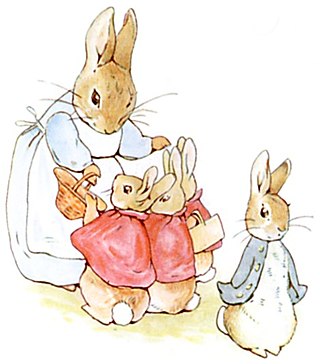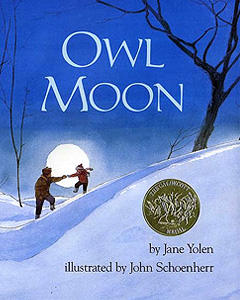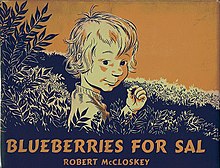
A picture book combines visual and verbal narratives in a book format, most often aimed at young children. With the narrative told primarily through text, they are distinct from comics, which do so primarily through sequential images.
John Robert McCloskey was an American writer and illustrator of children's books. He both wrote and illustrated eight picture books, and won two Caldecott Medals from the American Library Association for the year's best-illustrated picture book. Four of the eight books were set in Maine: Blueberries for Sal, One Morning in Maine, Time of Wonder, and Burt Dow, Deep-water Man. His best-known work is Make Way For Ducklings, set in Boston. In longer works, he both wrote and illustrated Homer Price and he illustrated Keith Robertson's Henry Reed series.

Ruth Sawyer was an American storyteller and a writer of fiction and non-fiction for children and adults. She is best known as the author of Roller Skates, which won the 1937 Newbery Medal. She received the Children's Literature Legacy Award in 1965 for her lifetime achievement in children's literature.
Ruth Ida Krauss was an American writer of children's books, including The Carrot Seed, and of theatrical poems for adult readers. Many of her books are still in print.
Trina Schart Hyman was an American illustrator of children's books. She illustrated over 150 books, including fairy tales and Arthurian legends. She won the 1985 Caldecott Medal for U.S. picture book illustration, recognizing Saint George and the Dragon, retold by Margaret Hodges.

Make Way for Ducklings is an American children's picture book written and illustrated by Robert McCloskey. First published in 1941 by the Viking Press, the book centers on a pair of mallards who raise their brood of ducklings on an island in the lagoon in the Boston Public Garden. It won the 1942 Caldecott Medal for McCloskey's illustrations, executed in charcoal then lithographed on zinc plates. As of 2003, the book had sold over two million copies. The book's popularity led to the construction of a statue by Nancy Schön in the Public Garden of the mother duck and her eight ducklings, which is a popular destination for children and adults alike. In 1991, Barbara Bush gave a duplicate of this sculpture to Raisa Gorbacheva as part of the START Treaty, and the work is displayed in Moscow's Novodevichy Park.

The Stinky Cheese Man and Other Fairly Stupid Tales is a postmodern children's book written by Jon Scieszka and illustrated by Lane Smith. Published in 1992 by Viking, it is a collection of twisted, humorous parodies of famous children's stories and fairy tales, such as "Little Red Riding Hood", "The Ugly Duckling" and "The Gingerbread Man". The book won The New York Times Best Illustrated Book award, was a Caldecott Honor book in 1993, and has won numerous other awards in various countries.
Alice Rose Provensen and Martin Provensen were an American couple who illustrated more than 40 children's books together, 19 of which they also wrote and edited. According to Alice, "we were a true collaboration. Martin and I really were one artist."
Barbara Cooney was an American writer and illustrator of 110 children's books, published for over sixty years. She received two Caldecott Medals for her work on Chanticleer and the Fox (1958) and Ox-Cart Man (1979), and a National Book Award for Miss Rumphius (1982). Her books have been translated into ten languages.

Time of Wonder is a 1957 children's picture book written and illustrated by Robert McCloskey that won the Caldecott Medal in 1958. The book tells the story of a family's summer on a Maine island overlooking Penobscot Bay, filled with bright images and simple alliteration. Rain, gulls, a foggy morning, the excitement of sailing, the quiet of the night, and the sudden terror of a hurricane are all expressed in this book. This was McCloskey's second Caldecott, the first being Make Way for Ducklings in 1942.
Margot Zemach was an American illustrator of more than forty children's books, some of which she also wrote. Many were adaptations of folk tales from around the world, especially Yiddish and other Eastern European stories. She and her husband Harvey Fischtrom, writing as Harve Zemach, collaborated on several picture books including Duffy and the Devil for which she won the 1974 Caldecott Medal.

Owl Moon is a 1987 children's picture book written by Jane Yolen and illustrated by John Schoenherr. It won a number of awards, most notably the Caldecott Medal for its illustrations, and appeared on the public television series Reading Rainbow. It has been translated into more than a dozen foreign languages, including French, German, Chinese, and Korean. In 1989, Weston Woods Studios adapted the book into an animated film narrated by Yolen.
Beatrice Schenk de Regniers was an American writer of children's picture books.
Berta Hoerner Hader and Elmer Stanley Hader were an American couple who jointly illustrated more than 70 children's books, about half of which they also wrote. They won the annual Caldecott Medal for The Big Snow (1948), recognizing the year's "most distinguished American picture book for children". They received the Caldecott Honor Book Award for Cock-a-doodle-doo in 1940 and The Mighty Hunter in 1944.

Maurice Sendak's Little Bear: The Little Bear Movie, or simply The Little Bear Movie, also known as Maurice Sendak's Little Bear: The Movie or simply Little Bear: The Movie, is a 2001 Canadian-American direct-to-video children's animated adventure film directed by Raymond Jafelice who co-wrote the screenplay with James Still and Nancy Barr. It is based on the Canadian children's animated television series Little Bear, which in turn is based on the children's book series of the same name written by Else Holmelund Minarik and illustrated by Maurice Sendak.

Weston Woods Studios is a production company that makes audio and short films based on well-known books for children. It was founded in 1953 by Morton Schindel in Weston, Connecticut, and named after the wooded area near his home. Weston Woods Studios' first project was Andy and the Lion in 1954; its first animated film was The Snowy Day in 1964. In 1968, Weston Woods began a long collaboration with animator Gene Deitch. Later, they opened international offices in Henley-on-Thames, England, UK (1972), as well as in Canada (1975) and Australia (1977). In addition to making the films, Weston Woods also conducted interviews with the writers, illustrators, and makers of the films. The films have appeared on children's television programs such as Captain Kangaroo, Eureeka's Castle, and Sammy's Story Shop. In the mid-1980s, the films were released on VHS under the Children's Circle titles, and Wood Knapp Video distributed these releases from 1988 to 1995.
Nancy Schön is an American sculptor whose work is displayed internationally in museums, libraries, universities, private collections, and public outdoor spaces. She is best known for her work titled Make Way for Ducklings, installed in 1987 in the Boston Public Garden.

One Morning in Maine is a picture book by Robert McCloskey set in Brooksville, Maine. It was awarded the Caldecott Honor in 1953. It features Robert McCloskey, his wife Peggy, and their two real-life daughters, Sarah ("Sal"), who had previously had appeared in Blueberries for Sal, and Jane. McCloskey was a professional illustrator and drew his wife's and daughters' facial features to accurately show what they really looked like. McCloskey also cleverly depicts the adventurously-rambunctious little Jane in his drawings of their mainland adventures; on every page, the robust tousle-headed toddler is usually shown to be exploringly bustling about independently of the two others in her group, engaged in "typical young tomboy" activities such as perching high up on a work-table, climbing on a stack of tires, snuggling with a furry puppy who has wandered into the garage, etc.

Marla Frazee is an American author and illustrator of children's literature. She has received three Caldecott Honors for picture book illustration.

A Big Mooncake for Little Star is a 2018 picture book written and illustrated by Grace Lin. The story is about Little Star gradually eating the mooncake that her mother has baked. The book was a departure for Lin both thematically and in her use of illustrative style. The book was well reviewed and was awarded a Caldecott Honor in 2019. The illustrations feature heavy use of black and rely on both the pictures and words to convey the story and its themes.











